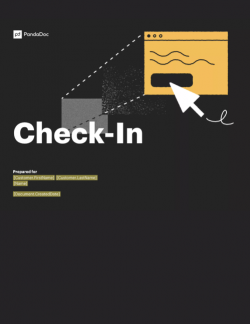Customer Success Plan Templates
When asked about the major goal of their business, many entrepreneurs speak about increasing revenues, expanding client reach, entering new markets, or providing high-quality services or products. However, to achieve these objectives, you should prioritize customer satisfaction. If you manage to keep your clientele happy, all other things mentioned above will not be late in coming. Given the mission-critical importance of customer success, it is necessary to come up with a customer success strategy presentation as a roadmap for your personnel to follow.
Why You Should Have a Client Success Story Template Handy
There are several reasons that make entrepreneurs appoint a customer success manager who is responsible for drawing a customer success plan example for the organization. Such a document helps them to:
- Standardize pipeline and realize goals. Having the customer success strategy template at their fingertips, employees and managers have a clear-cut aim before them and can move step-by-step along the outlined way to achieve the desired outcome.
- Foster consistency. All client-facing personnel will be kept on the same page and have a common point of reference, thus ensuring a level of uniformity in approaches and methods.
- Eliminate guesswork. When you have identified trends, detected bottlenecks, and pinpointed problem areas, you can use this information as a reliable source of actionable insights to reduce risks and tap growth opportunities.
- Monitor changes. Whatever transformations occur in customer behavior, the properly devised customer story template will allow you to be aware of their nature, scale, and impact.
- Boost efficiency. When the entire team has a succession of milestones to steer by, the company functions like a well-greased mechanism, which is sure to tell positively on its productivity and revenues.
If you want all of these good things to happen to your organization, you should know how to tackle the creation of a customer success plan.
Essentials of Writing a Customer Success Report Sample
Client success plan samples may have different guises. But whether it is a sales to customer success handoff template or a customer success email template, its creation is subject to the same rule of thumb.
1. Understand how customers view success
To do this, you should involve all departments (sales, marketing, product, engineering, etc.) and list everything a client should do to use your product or service successfully.
2. Build a customer journey map
All the actions on the list should be mapped out on a timeline, thus forming the customer life cycle.
3. Identify the vital activities
Determine which customers’ activities have the greatest frequency and impact by yielding the highest engagement or revenue.
4. Determine benchmarks and metrics
Success is a too general and vague notion, so its measurement and description have to rely on some more tangible indices and numbers. These typically come from the sales and marketing departments and should be sifted through to select those that bear on customer success and can be treated as benchmarks to proceed from.
5. Update and iterate
Any plan isn’t carved in stone. In the world of sweeping changes, the rock-solid set of guidelines isn’t going to satisfy the ever-vacillating requirements of the market. So be ready to revisit your customer success strategy on a regular basis and fine-tune or even significantly overhaul it to keep it aligned with the company’s business goals and clients’ shifting purposes and preferences.
As you see, creating a success plan is a no-joke task that can be entrusted only to experts in the field. If such a job is above your head or will be a tough row to hoe for your employees, it makes sense to make use of the ready-made templates.
Customer Success Templates Offered By PandaDoc
We have several boilerplate samples to gauge the customer success of your business that can be customized to cater to the needs and nature of your organization and the peculiarities of your target audience.
- Success plan template. This is the mainstay sample leveraged to create a document that will determine success criteria for your organization, showcase expectations, and set achievable goals for customer success teams and their managers.
- Quarterly Business Review Template. As an auxiliary document, it helps to see how much value you have provided during the last quarter for the consumers of your product or service. Personnel working with it can pull data from various sources into the form in a couple of clicks to spare them time and effort.
- Quarterly Check-in Template. Thanks to it, you can get in touch with your clients once in three months to learn how they feel about cooperation with you and see where you underperform.
- Monthly Check-in Template. Similar to the previous form, it is sent around every month to constantly keep your fingers on the pulse of customer success and introduce necessary changes in your customer-oriented strategy on short notice.
The overarching goal of the customer success team is to step up customer retention and decrease customer churn. Having these templates at their disposal, they can make creating, modifying, sharing, and distributing their pipeline documentation a breeze. Instead of bothering with paperwork, they will be able to focus on the practical steps aimed at improving multiple aspects of their relationships with clients with an eye on delivering value to the clientele as a chief priority.
Let PandaDoc become a reliable partner in your efforts to ensure the customer success of your business!






